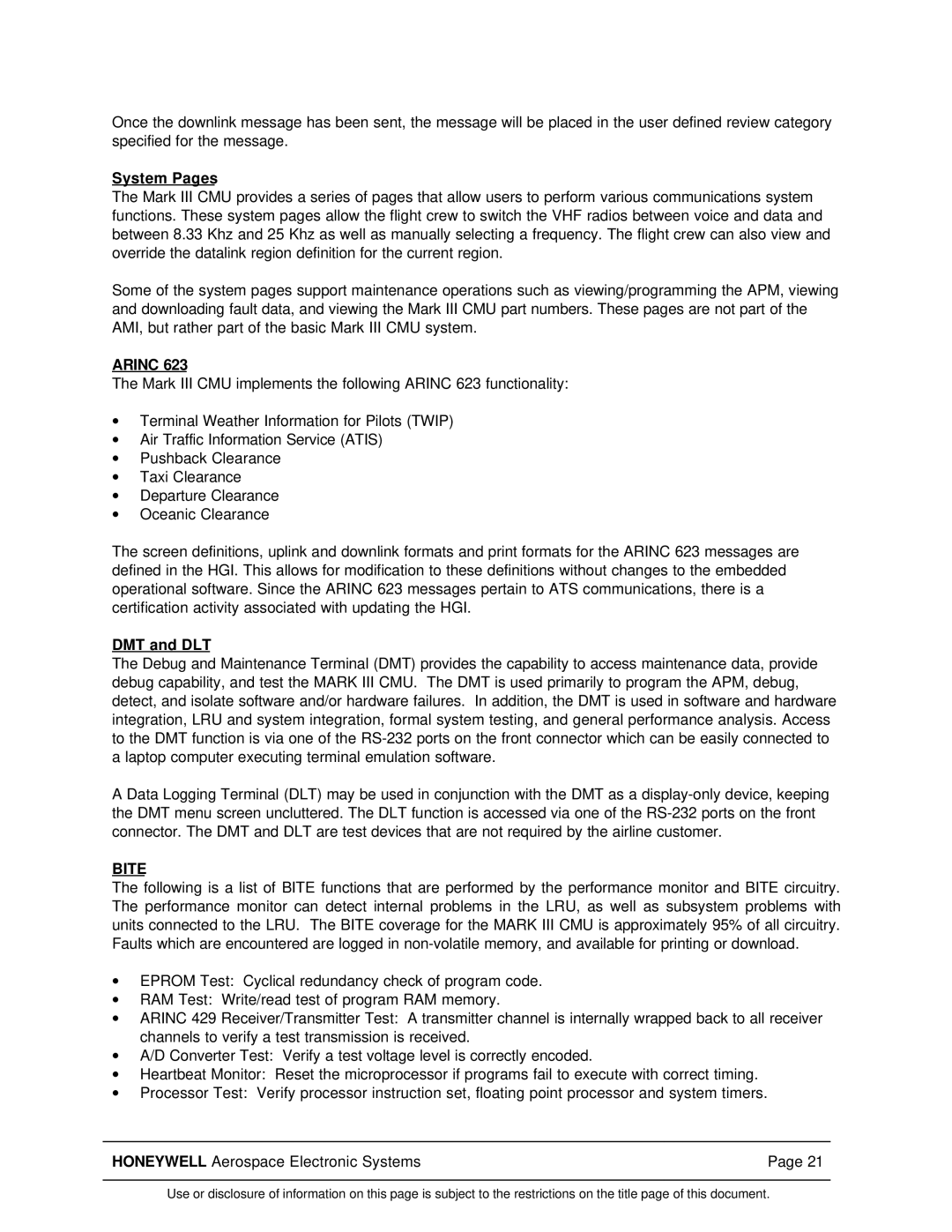Once the downlink message has been sent, the message will be placed in the user defined review category specified for the message.
System Pages
The Mark III CMU provides a series of pages that allow users to perform various communications system functions. These system pages allow the flight crew to switch the VHF radios between voice and data and between 8.33 Khz and 25 Khz as well as manually selecting a frequency. The flight crew can also view and override the datalink region definition for the current region.
Some of the system pages support maintenance operations such as viewing/programming the APM, viewing and downloading fault data, and viewing the Mark III CMU part numbers. These pages are not part of the AMI, but rather part of the basic Mark III CMU system.
ARINC 623
The Mark III CMU implements the following ARINC 623 functionality:
∙Terminal Weather Information for Pilots (TWIP)
∙Air Traffic Information Service (ATIS)
∙Pushback Clearance
∙Taxi Clearance
∙Departure Clearance
∙Oceanic Clearance
The screen definitions, uplink and downlink formats and print formats for the ARINC 623 messages are defined in the HGI. This allows for modification to these definitions without changes to the embedded operational software. Since the ARINC 623 messages pertain to ATS communications, there is a certification activity associated with updating the HGI.
DMT and DLT
The Debug and Maintenance Terminal (DMT) provides the capability to access maintenance data, provide debug capability, and test the MARK III CMU. The DMT is used primarily to program the APM, debug, detect, and isolate software and/or hardware failures. In addition, the DMT is used in software and hardware integration, LRU and system integration, formal system testing, and general performance analysis. Access to the DMT function is via one of the
A Data Logging Terminal (DLT) may be used in conjunction with the DMT as a
BITE
The following is a list of BITE functions that are performed by the performance monitor and BITE circuitry. The performance monitor can detect internal problems in the LRU, as well as subsystem problems with units connected to the LRU. The BITE coverage for the MARK III CMU is approximately 95% of all circuitry. Faults which are encountered are logged in
∙EPROM Test: Cyclical redundancy check of program code.
∙RAM Test: Write/read test of program RAM memory.
∙ARINC 429 Receiver/Transmitter Test: A transmitter channel is internally wrapped back to all receiver channels to verify a test transmission is received.
∙A/D Converter Test: Verify a test voltage level is correctly encoded.
∙Heartbeat Monitor: Reset the microprocessor if programs fail to execute with correct timing.
∙Processor Test: Verify processor instruction set, floating point processor and system timers.
HONEYWELL Aerospace Electronic Systems | Page 21 |
Use or disclosure of information on this page is subject to the restrictions on the title page of this document.
